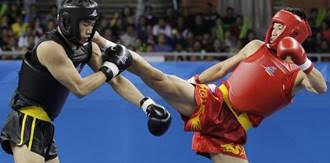Author: M.Sc. Edvard Sefer, Founder (Soke) of the Monku Jutsu Art Style of Self-Defense
Abstract
The aim of this text is to explain the difference between sport fights and real-life fights. The materials and methods used for this research include a study of literature, old Chinese drawings, practical experience with Monku Jutsu, acupressure point fighting, history, Kata forms, anatomy, and body kinetics, as well as Chinese and modern philosophies.
Article
To gain knowledge, you must first understand history. Thus Confucius (551-479 BC) the most famous Chinese teacher and philosopher wrote: “Study the past, if you would divine the future,” and Johan Wolfgang von Goethe (1749-1823AD), the famous German writer, poet, scientist, and philosopher, said that the “history of a science is that science alone.”
It is commonly accepted that the martial arts we know today started with Bodidharma, a Buddhist monk who lived during the fifth or sixth century AD. Bodhidharma was a very intelligent and well-educated man who traveled a lot in his life. At that time, most people did not travel more than two days by foot from their homes in their entire lifetimes. As the philosopher Certeau explains, it was important to Bodhidharma that he did not live permanently in some monastery where he would be under the pressure of higher priests who wanted to explain the “truth” to him. He was free, and his mind was free, so that he could observe the world and come to his own conclusions.
On his travels, he observed animals, what they do and how they live. As monks are not aggressors or violent persons, he, as a monk, developed the martial art of self-defense from these observations. Self-defense is not only the practice of defending oneself through blocking, kicking, and striking attacks. After all, defense through blocking cannot continue until the attacker gets tired and stops attacking. Self-defense is, from the first step, a form of protecting oneself from an attacker and in the correct moment turning one’s defense to offense in order to seriously harm or kill the attacker, thus ending the attack. As Sun Tzu (545-496 BC) Chinese general and Art of war book author said, “In ancient times the experienced warrior first assured his own invulnerability and then waited for his enemy’s vulnerability.”
I followed Bodidharma’s observations, and my first observation was that male animals fight their own kind (imagine bulls, monkeys, or cats) to show who is stronger; there is pushing and punching as in sports, but normally neither participant dies and the stronger male wins the right to inseminate a female. When animals are hunting food, however, they catch their prey; they never let a trapped animal escape only to start the chase again. When they catch their prey, they hold it tightly (imagine a tiger, snake, or hawk) and try to immediately break or harm its leg to prevent it from escaping; then, it breaks its neck or presses on its throat to choke it.
Like all other animals, humans have fought amongst each other from the very beginning of time for prey, females, and, later, for land and other valuables. There have always been two kinds of fights: one to show off in front of females so that they could choose the best inseminator, and the second to steal something valuable from another person. The first type of fight generally does not end with the death of the loser; in the second type of fight over the valuable object, the participants try to kill one another in order to finalize the new acquisition forever. Today, we call the first type of fight a sport fight, and the second a street fight or war. Sport fights mostly take place between opponents of a similar size and power capability.
In nature, the weak do not attack the strong, and if the strong attacks the weak, the weak will try to survive by running away; it will only accept a fight if there is no way to escape.
It is very important to understand that fighting sports are games, and games have rules, limited place, Agon, and Ludus, as is described by Caillois, Fink, and Huizinga. Agon is the rule of competitor equality; Ludus includes the rules that make things unnecessarily more difficult and, at same time, prolong a sport fight so that those who paid for entrance tickets can satisfy their need for violence. I find the most significant difference between sports and real-life situations to be that in sporting games you can always give up and surrender to protect yourself from injury and your competitor will respect this action; in real life, the winning attacker will not respect your wish.
In contrast, in a real fight or war everybody wants to finish the fight as soon as possible to save human and material resources. In his book The Art of War, Sun Tzu explains this very clearly with the following expressions of wisdom:
Haste is madness, but I have never seen a smart delay.
In war, victory must be fast. If victory is slow, men get tired.
In war price, the victory not prolonged warfare.
Conclusion
In the sport of martial arts, people do not kill each other. In contrast, real-life martial arts are intended to harm or kill another.






